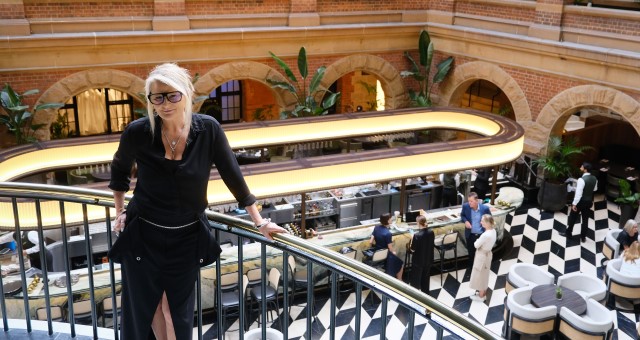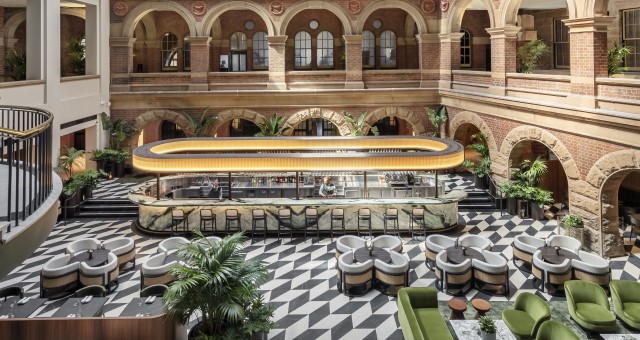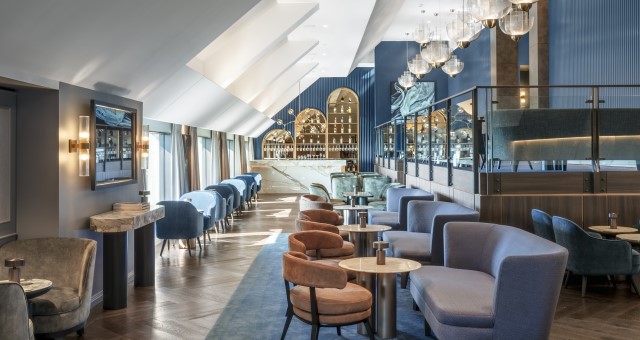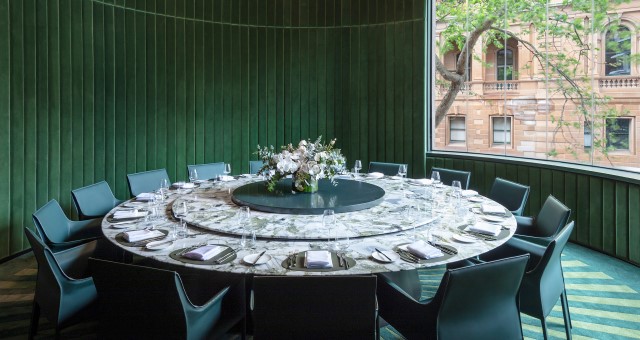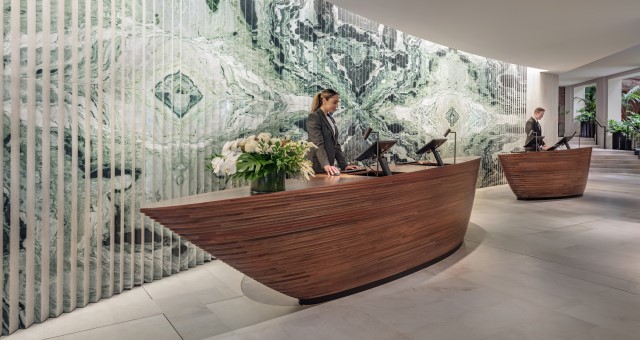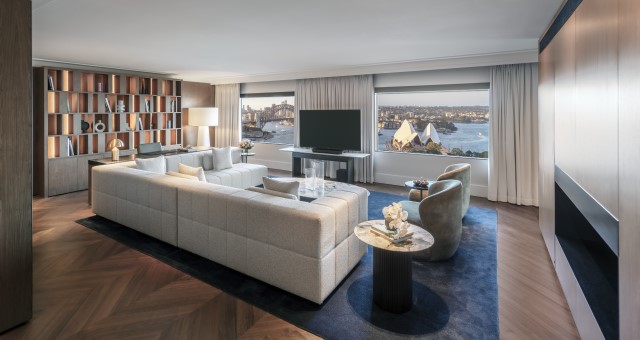Woods Bagot Principal and Regional Interior Design Leader Tracey Wiles spoke to Ruth Hogan about hotel refurbishments and heritage projects, including the recently transformed InterContinental Sydney.
At a time when everyone is trying to operate more sustainably, how do you ensure a hotel redesign is current but has longevity.
For me, it’s important to have really conscious choices about materials that are going to wear well, that will get a great patina to them – a handrail or a door handle that feels worn, not worn out, but certainly loved and cherished and something that stand the test of time. I think that is really heartwarming to people.
We know that generations have come before us and hopefully they’re there for longer. Beauty is definitely going to be part of sustainability – choosing beautiful materials that last a long time and start to slow down those refurbishment cycles.
There’s always a spotlight on architecture but with interiors we need to take responsibility for all that turnover after the building has been built. Demands are changing and as with any industry, the hospitality industry has to be agile.
You’ve worked on many major heritage projects including InterContinental Sydney. Can you speak to the additional challenges that you’re dealing with when working in a precious building like that?
It’s an extreme privilege to be working on these buildings. We learn so much about what architects and designers have done before us, and it gives us a base, something really grounded in heritage; and to be part of a lineage makes it less fickle.
I’m really interested in designing for permanence and longevity. With a heritage building, the client is usually already on board with that, and there’s a certain quality of materials that are already there.
At Intercontinental Sydney, there is incredible detailing around the lift portals, to a level we wouldn’t put the emphasis on or the spend today, so we can take that detail and pull a materiality thread from there and from the brickwork and the stand stone and then look at it with a contemporary eye.
Certainly, the oversizing of the black and white tiles was a reference back to heritage, but it was also looking to what is contemporary, bold and courageous – something that has been touched with the hand of today.
There are so many stories and narratives to pull on. It’s an incredible thing to work on heritage buildings, but technically, they’re difficult. They throw up all sorts of problems – they’re like a petulant teenager.
Is it difficult today to find the craftspeople that specialise on the various elements of heritage projects?
I think it’s absolutely imperative that we seek that out. We’re going back to this level of craftsmanship that has more of a lifespan to it and a sense of longevity and durability. All the big fashion houses are marketing the ‘making of’ and that’s why you have these pop-up stores where you can see someone stitching, engraving, embossing or personalising something. With architecture, we need to get better at highlighting the craftspeople that we’re sourcing things from.
Civardi, the joiners on the project, are insanely talented. They worked on the reception desks and the beautiful feature wall behind them. The desks are beautiful sculptures in themselves and the wall (a curved lenticular wall with alternating pleated strips of marble and limestone) resembles an ocean wave.
It’s about a collective of people being committed to doing something beautiful and unique, and I think that’s where the magic happens; where design meets buildability meets quality material and craftsmanship to become art, and something that we hope that future generations couldn’t rip out that – that their souls wouldn’t let them.
Storytelling has become really important in hotels, creating that sense of place and honouring the history of the site.
Yes, and making that indelible and not erasable. There is nothing more beautiful than seeing generations interacting with something that is permanent. That’s why I think a product like Intercontinental Sydney will always feel better than something that is a new build in lighter materials. We’ve got history to thank, and we would hope that future generations will thank us for not pulling things out. When we discover things that the last generation protected for us to uncover, they’re magical moments.
Sensory design is becoming another big trend. What are the important aspects of sensory design that were considered during this project?
I’m a big believer in sound, smell, touch. We need visual texture and tactile to touch. I think buildings that invite you to interact with them are really beautiful – when they’re not so precious or so weak that you can’t touch them, I think that’s really important.
Sound is incredibly important. Sound installation is becoming a really big thing, whether we have white noise, background music, it really affects the way people interact in a space.
Smell; InterContinental has invested greatly in that – I think good hotels do. All of those things create the full experience.
The low-level lighting in the bar with the candle lanterns – that transition from day to night – and bringing the Botanical Gardens in. I think there’s a human need to be more at one with nature; it makes us feel good.
I’m obsessed with transitional spaces and how we move from one space to the other – it’s like a palate cleanser. I’ve never talked corridors, they are rooms, and they deserve so much attention, equally as much as the big wow moments.

